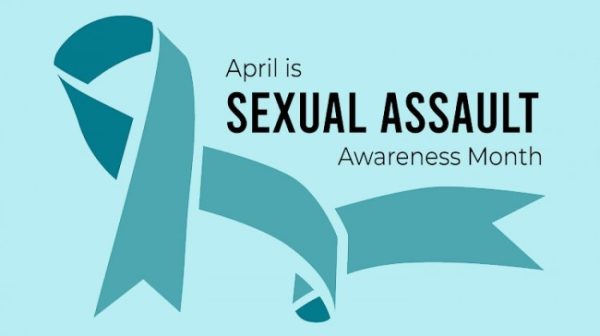Cumbre Vieja: Months in a Volcanic Eruption

December 16, 2021
Most of the time when you think of a volcanic eruption, it typically involves a whole lot of shaking, smoke, ash, and molten hot lava spewing into the sky. It’s quick. It’s brutal. And it’s absolutely devastating.
Another assumption is that these things typically happen to past civilizations. Ones that might have made entire cities nestled right alongside the base of what they probably thought was just another mountain. That being said, situations like Pompeii aren’t left in the past. There isn’t just one standard for every volcanic eruption. They are still an issue affecting many places today, and they have their own set of positive and negative impacts on the surrounding area.

One example of modern volcanic eruption is currently taking place off the coast of Africa, where one of the Spanish Canary Islands has been facing an eruption since early September. Cumbre Vieja is a volcano that has been asleep for around 50 years. This isn’t the first time it’s erupted, and it probably won’t be the last. Additionally, Cumbre Vieja has been the primary cause of multiple earthquakes hitting La Palma, the island it calls home.
While there have been casualties as a result of Cumbre Vieja’s fiery eruption, modern technology has made it possible to track patterns in volcanic eruptions. This essentially makes it easier to guess when an active volcano might erupt, giving the local population valuable time to evacuate, preventing further casualties than in the past. While this does help save lives, it doesn’t account for the destruction the volcano may reap on the land itself. You can try and guess when a volcano may erupt, which could help get the population out in time, but you can’t evacuate people’s livelihoods. Homes, workplaces, and even memories often become victims of the devastation of a volcanic eruption.
So why do we bother building cities beside volcanoes anymore? Why not just move somewhere else?
Well, for one thing, there is a purpose to volcanic eruptions. Active volcanoes provide a unique resource in themselves, as their eruptions can break down materials in the earth enough to create some of the most fertile soil on the planet. There is a reason so many ancient civilizations settled beside volcanoes, as this rich land can give rise to an abundant food source. This is also true for current cities residing by volcanoes. The island of La Palma, for instance, is well known for its banana crop. While the present volcanic eruption does put a damper on the farming of this crop, it is eruptions like that of Cumbre Vieja that make the land rich in minerals for farming.

Volcanic eruptions also provide a unique source of geothermal energy. The steam from heating magma underground can be harnessed as a means to generate electricity. This, once again, gives rise to modern cities relying on volcanoes for their day-to-day life. So while volcanoes may seem like a destructive force of nature, those very traits giving rise to such an image provide a way of life for people nearby. Volcanoes receive a lot of negative publicity for the scale of their eruptions, but such eruptions can foster life instead of destruction.
That being said, situations like Cumbre Vieja are not particularly unique in their destruction. Volcanic eruptions happen on a daily basis, with varying degrees of collateral damage to follow. The people of La Palma are still awaiting the eruption’s end, relying on researchers to find out exactly when that might be. Only once the eruption has ended can people begin to rebuild and heal their livelihoods from the disaster. Cumbre Vieja has offered scientists the unique opportunity to study the eruption up close since the site is close to an airport in La Palma. Hopefully, with further research, an end to the eruption can be found. Researchers may also gain an even better understanding of warning signs for volcanic eruptions, improving response and evacuation times. While volcanoes do provide necessary resources for the lives of people close by, it is still necessary to research further in order to improve the quality of responses to disasters caused by eruptions.
Sources:
https://www.usgs.gov/faqs/what-are-some-benefits-volcanic-eruptions?qt-
news_science_products=0#qt-news_science_products
https://volcano.si.edu/gvp_currenteruptions.cfm
https://www.e-education.psu.edu/earth520/content/l6_p7.html
https://www.npr.org/2021/11/19/1056894737/as-a-sea-of-lava-destroys-livelihoods-on-la-
palma-it-also-offers-a-lifeline
https://phys.org/news/2021-12-environmental-scientist-lessons-unexpected-
eruption.html
https://thehill.com/changing-america/resilience/natural-disasters/584281-scientists-are-
racing-from-all-over-the-world
Image Sources:
https://encrypted-tbn0.gstatic.com/images?q=tbn:ANd9GcQsEAq3r_R_ws7M3B-
7ADiV3qL-
7HLp97RhiFRN7MXyyECGR8jWTMVPK4WyrQ7VZlsyQzc:https://upload.wikimedia.org/wikiped
ia/commons/1/13/Erupci%25C3%25B3n_Cumbre_Vieja%252C_la_Palma%252C_Canarias%25
2C_Espa%25C3%25B1a%252C_noviembre_de_2021_06.jpg&usqp=CAU
https://encrypted-tbn0.gstatic.com/images?q=tbn:ANd9GcT2Jh0-
O8IByYSI0Tp5d4xPbUo5X6joDL2QhKO8WWWLflUQ3JIgBUdn5CHXRz5kcJBdNco:https://live.
staticflickr.com/65535/49097509687_7e0532ebfd_b.jpg&usqp=CAU
https://encrypted-
tbn0.gstatic.com/images?q=tbn:ANd9GcRvqroPxAHT1PjIgj1x1nKyci_dsccMbsrlvw:https://bioon
e.org/ContentImages/Journals/argl/57/1/aramit5713/graphic/f01_69.jpg&usqp=CAU








